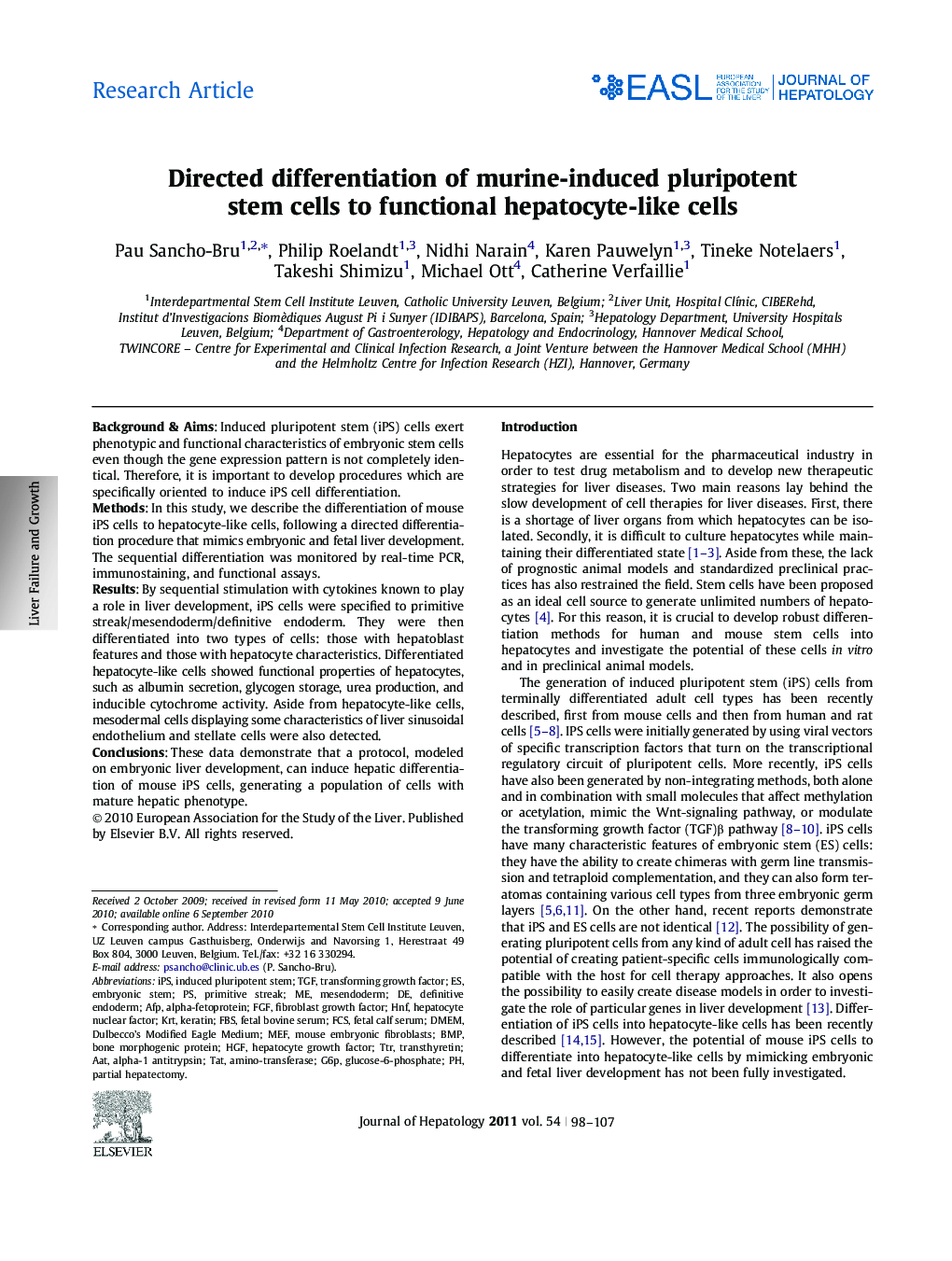| Article ID | Journal | Published Year | Pages | File Type |
|---|---|---|---|---|
| 6107469 | Journal of Hepatology | 2011 | 10 Pages |
Background & AimsInduced pluripotent stem (iPS) cells exert phenotypic and functional characteristics of embryonic stem cells even though the gene expression pattern is not completely identical. Therefore, it is important to develop procedures which are specifically oriented to induce iPS cell differentiation.MethodsIn this study, we describe the differentiation of mouse iPS cells to hepatocyte-like cells, following a directed differentiation procedure that mimics embryonic and fetal liver development. The sequential differentiation was monitored by real-time PCR, immunostaining, and functional assays.ResultsBy sequential stimulation with cytokines known to play a role in liver development, iPS cells were specified to primitive streak/mesendoderm/definitive endoderm. They were then differentiated into two types of cells: those with hepatoblast features and those with hepatocyte characteristics. Differentiated hepatocyte-like cells showed functional properties of hepatocytes, such as albumin secretion, glycogen storage, urea production, and inducible cytochrome activity. Aside from hepatocyte-like cells, mesodermal cells displaying some characteristics of liver sinusoidal endothelium and stellate cells were also detected.ConclusionsThese data demonstrate that a protocol, modeled on embryonic liver development, can induce hepatic differentiation of mouse iPS cells, generating a population of cells with mature hepatic phenotype.
